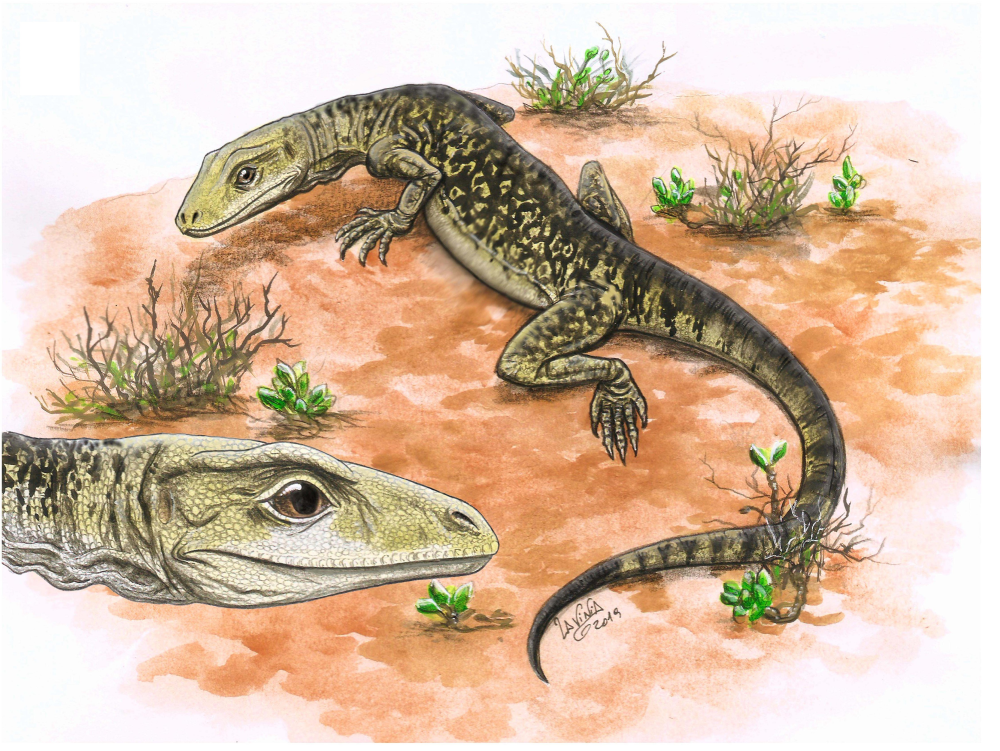A tiny skeleton became the subject of a big debate as scientists went back and forth over the identity of a reptile retrieved from a quarry near Bristol, UK. Now, the authors of the original study that crowned it the world’s oldest lizard have addressed criticism made about their discovery, confirming “that the little Bristol reptile is indeed the world’s oldest modern-type lizard.”
That’s according to Dr David Whiteside, lead author of the original study that came out in Science Advances in 2022, and a follow-up now published to Royal Society Open Science. Both papers center around a small reptile that was retrieved from a quarry in a bit of the ground that represents the latest Triassic of England.
It was named Cryptovaranoides microlanius, and at around 205 million years old (at least), it was declared not only the oldest known lizard, but a fossil find that pushed back the emergence of these animals by 30 million years. Such news was expected to stir up some controversy, but the team were confident in 2022 that they had inspected the specimen thoroughly enough to support their claims.
“We were therefore surprised, perhaps even shocked, that in 2023 another team of academics suggested that Cryptovaranoides was not a lizard or even a lizard relative,” said co-author Professor Michael Benton in a release, “but in fact an archosauromorph, more closely related to crocodilians and dinosaurs.”

Life restoration of the earliest lizard, Cryptovaranoides microlanius.
Image credit: Lavinia Gandolfi
Concerns were raised from elsewhere in the academic community, and so the team went back to check their original work. Science is rarely a linear process and this kind of openness to consider and assess the validity of alternative hypotheses is crucial to the way scientists ensure they continue moving in the right direction, as we found out in an interview with Prof Jim Al-Khalili.
The Bristol team returned to the original specimen and scans that revealed the fossil hidden beneath a rock, including X-ray and CT scans. The results revealed that most of the concerns raised were wrong, and that all details of the skull, jaws, teeth, and limb bones put Cryptovaranoides down as a lizard, not an archosauropmorph. They’ve included all the extra materials in their latest study so that anyone can dive in and get a good look at the details.
“The result of all this had to be tested by a phylogenetic analysis,” said Whiteside. “This is where we code hundreds of anatomical features in Cryptovaranoides and other modern and fossil lizards, as well as various archosauromorphs. We ran the analysis time after time, and it gave our original result, that the little Bristol reptile is indeed the world’s oldest modern-type lizard.”
Congratulations, Cryptovaranoides.
The study is published in Royal Society Open Science.
Source Link: 205-Million-Year-Old Lizard Is The World’s Oldest, Discovered In A Quarry Near Bristol